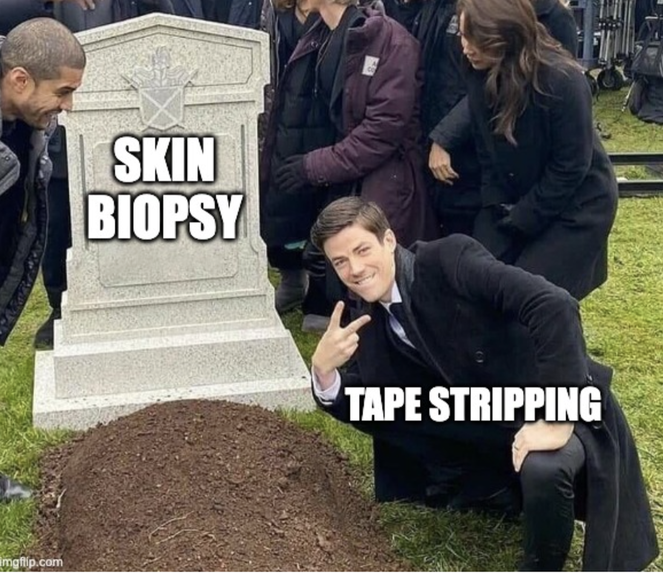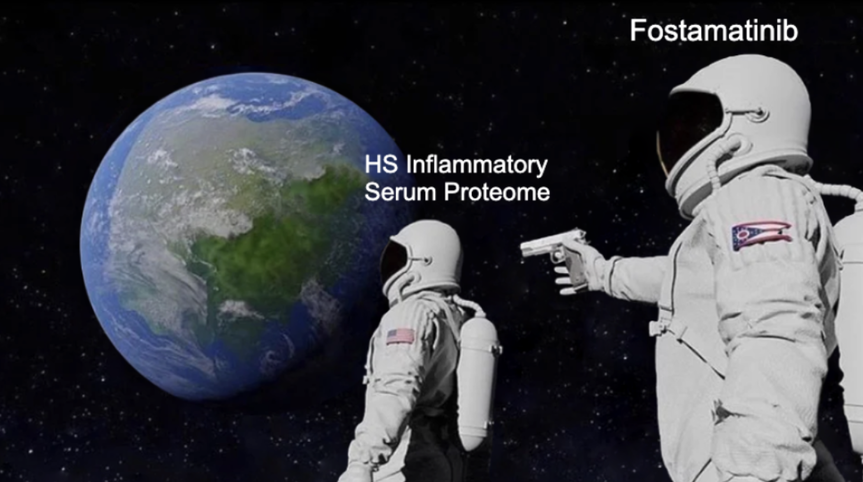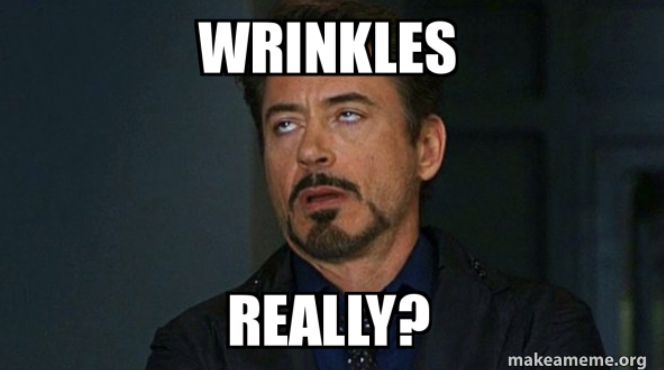Fifty-sEVenth issue
April 3, 2024
Validation of thermal imaging and the ALT-70 prediction model to differentiate cellulitis from pseudocellulitis
JAMA Dermatology
JAMA Dermatology
It’s getting hot in here!
Cellulitis, the most common skin and soft-tissue infection, is primarily diagnosed clinically through redness, warmth, tenderness, and edema. Conditions resembling cellulitis are termed pseudocellulitis. An estimated 30% of patients admitted with cellulitis from the ED actually have pseudocellulitis. Consulting dermatology has been shown to reduce cellulitis misdiagnosis and unnecessary antibiotic use; however, implementing dermatology consults for every suspected cellulitis in the ED would be impractical.
This prospective diagnostic validation study of 204 patients who presented to the ED compared skin temperatures using thermal imaging for patients with cellulitis or pseudocellulitis, and evaluated the use of the ALT-70 (asymmetry, leukocytosis, tachycardia, and age ≥ 70) prediction model to differentiate between the two conditions.
What did they find?
Main Takeaway: Thermal imaging, either independently or together with the ALT-70 prediction model, may serve as a diagnostic tool to help reduce overdiagnosis of cellulitis.
Limitations: Convenience sampling may reduce the generalizability of results. Patients who present to the ED may have more severe cases, potentially influencing temperatures.
Cellulitis, the most common skin and soft-tissue infection, is primarily diagnosed clinically through redness, warmth, tenderness, and edema. Conditions resembling cellulitis are termed pseudocellulitis. An estimated 30% of patients admitted with cellulitis from the ED actually have pseudocellulitis. Consulting dermatology has been shown to reduce cellulitis misdiagnosis and unnecessary antibiotic use; however, implementing dermatology consults for every suspected cellulitis in the ED would be impractical.
This prospective diagnostic validation study of 204 patients who presented to the ED compared skin temperatures using thermal imaging for patients with cellulitis or pseudocellulitis, and evaluated the use of the ALT-70 (asymmetry, leukocytosis, tachycardia, and age ≥ 70) prediction model to differentiate between the two conditions.
What did they find?
- Skin surface temperatures in all measures (mean, maximum, and gradient) were significantly higher for cellulitis when compared to pseudocellulitis, maximum temperature of the affected limb with cellulitis was 33.2 °C and 31.2 °C for pseudocellulitis (difference, 2.0 °C [95% CI, 1.3-2.7 °C]; P < 0.001]
- Tmax was the optimal measure for differentiating diagnosis; temperatures over 31.2 °C determined predictive of cellulitis, with a mean negative predictive value of 93.5% (SD 4.7%) and sensitivity 96.8% (SD 2.3%)
- The ALT-70 prediction model had a negative predictive value of 95.2% [95% CI, 92.1%-98.4%] and sensitivity of 98.8% [95% CI, 97.2%-100%]
- Specificity was highest with a combination of the maximum temperature and ALT-70 prediction model (53.9% [95% CI, 46.5%-61.2%]
Main Takeaway: Thermal imaging, either independently or together with the ALT-70 prediction model, may serve as a diagnostic tool to help reduce overdiagnosis of cellulitis.
Limitations: Convenience sampling may reduce the generalizability of results. Patients who present to the ED may have more severe cases, potentially influencing temperatures.
Tape strips detect molecular alterations and cutaneous biomarkers in skin of patients with hidradenitis suppurativa
Journal of American Academy Dermatology
Journal of American Academy Dermatology
Peeling back the layers of hidradenitis suppurativa with… tape?
Hidradenitis suppurativa (HA) is a chronic, systemic inflammatory skin disease affecting up to 4% of the global population. The underlying pathology of HS is complex, with prior studies showing TNF-alpha and Interleukin (IL) -17 as biomarkers for the disease. Identifying these biomarkers via skin biopsy is the current gold standard for diagnosis, but biopsies can be associated with infection, pain, scarring, and are often not feasible for repeated testing or use in pediatric populations.
Authors investigated non-invasive biomarker identification through tape stripping, a technique previously validated in conditions such as atopic dermatitis and psoriasis. 22 mm circular pieces of D-Squame adhesive tape are applied to the skin, immediately removed, and then processed via a technique that allows for RNA extraction.
What did they find?
Main takeaway: Tape stripping appears to be a valid and minimally invasive method to identify cutaneous biomarkers in hidradenitis suppurativa.
Hidradenitis suppurativa (HA) is a chronic, systemic inflammatory skin disease affecting up to 4% of the global population. The underlying pathology of HS is complex, with prior studies showing TNF-alpha and Interleukin (IL) -17 as biomarkers for the disease. Identifying these biomarkers via skin biopsy is the current gold standard for diagnosis, but biopsies can be associated with infection, pain, scarring, and are often not feasible for repeated testing or use in pediatric populations.
Authors investigated non-invasive biomarker identification through tape stripping, a technique previously validated in conditions such as atopic dermatitis and psoriasis. 22 mm circular pieces of D-Squame adhesive tape are applied to the skin, immediately removed, and then processed via a technique that allows for RNA extraction.
What did they find?
- A significant correlation of the TNF-alpha pathway genes between biopsies and tape strips was observed (R=0.764, P<.0001)
- Similarly, a significant correlation in the IL-17 pathway genes between the 2 sample approaches was observed (R=0.6789, P=.0036)
- Molecular alterations were noted in tape-strips collected from nonlesional skin in patients with biopsy-proven HS, indicating a potential for disease identification before cutaneous manifestation
Main takeaway: Tape stripping appears to be a valid and minimally invasive method to identify cutaneous biomarkers in hidradenitis suppurativa.
Alterations to the hidradenitis suppurativa serum proteome with spleen tyrosine kinase antagonism: proteomic results from a phase 2 clinical trial
Journal of Investigative Dermatology
Journal of Investigative Dermatology
Fostamatinib: a fast fix for HS?
Hidradenitis suppurativa (HS) is a complex chronic inflammatory condition; the pathogenesis of the disease is not completely understood. Spleen tyrosine kinase activity is key for B cell receptor signaling and Fc-mediated signaling in monocytes and macrophages, and these pathways are thought to be dysregulated in HS. Fostamatinib is a spleen tyrosine kinase antagonist in phase 2 clinical trial for HS, and researchers sought to analyze its effect on protein expression in HS patients.
Inflammatory serum proteome analysis was conducted in patients with HS (n=20) and compared to healthy controls (n=5) at baseline. Changes in the serum proteome in HS patients treated with fostamatinib were analyzed at weeks 4 and 12.
What did they find?
Main Takeaways: Fostamatinib therapy has a significant impact on the inflammatory serum proteome in patients with hidradenitis suppurativa, and serum proteome biomarkers may aid in patient selection for therapy.
Hidradenitis suppurativa (HS) is a complex chronic inflammatory condition; the pathogenesis of the disease is not completely understood. Spleen tyrosine kinase activity is key for B cell receptor signaling and Fc-mediated signaling in monocytes and macrophages, and these pathways are thought to be dysregulated in HS. Fostamatinib is a spleen tyrosine kinase antagonist in phase 2 clinical trial for HS, and researchers sought to analyze its effect on protein expression in HS patients.
Inflammatory serum proteome analysis was conducted in patients with HS (n=20) and compared to healthy controls (n=5) at baseline. Changes in the serum proteome in HS patients treated with fostamatinib were analyzed at weeks 4 and 12.
What did they find?
- Baseline proteome analysis showed upregulation of B-cell and monocyte/macrophage-associated proteins and pathways in HS patients compared to healthy controls
- Patients treated with fostamatinib showed significant differences in complete serum proteome seen at week 4 of therapy compared to baseline (P<0.01) with downregulation of Th-17 associated cytokines, B-cell associated proteins, and IFN-y mediated proteins
- Patients with clinical response to fostamatinib showed a greater reduction in serum IL-17A (P=0.048), IL-6 (P=0.018), IL-8 (P=0.005), and CX3CL1 (P=0.0009) compared to nonresponders
- Patients with higher baseline levels of CCL28 were associated with clinical response to fostamatinib at week 12 compared to nonresponders (P=0.004)
Main Takeaways: Fostamatinib therapy has a significant impact on the inflammatory serum proteome in patients with hidradenitis suppurativa, and serum proteome biomarkers may aid in patient selection for therapy.
Are intralesional injections of combined bleomycin and triamcinolone acetonide effective for treatment of refractory keloids?
Journal of Dermatologic Surgery
Journal of Dermatologic Surgery
Key combination for keloids! ~Triam~ it out!
Despite multiple therapeutic options, some keloids are difficult to treat. Researchers investigated if dual therapy with triamcinolone and bleomycin is more efficacious when used in combination.
A combination of triamcinolone and bleomycin was injected into the keloids of patients (n=36) who had recurring or refractory keloids. The combination injections were repeated monthly until the keloid became flat or the patient reached a maximum of 6 injections. The Japan Scar Scale (JSS) (induration, elevation, redness of scar, surrounding erythema, pain, and itch) and the flattening of lesions was used to evaluate the treatment.
What did they find?
Main Takeaways: Combined injections of bleomycin and triamcinolone were effective and safe for treating keloids that did not respond well to previous therapies.
Despite multiple therapeutic options, some keloids are difficult to treat. Researchers investigated if dual therapy with triamcinolone and bleomycin is more efficacious when used in combination.
A combination of triamcinolone and bleomycin was injected into the keloids of patients (n=36) who had recurring or refractory keloids. The combination injections were repeated monthly until the keloid became flat or the patient reached a maximum of 6 injections. The Japan Scar Scale (JSS) (induration, elevation, redness of scar, surrounding erythema, pain, and itch) and the flattening of lesions was used to evaluate the treatment.
What did they find?
- Mean JSS scores decreased significantly from 11.61 土 2.59 to 2.33 土 1.05 after treatment (p=0.000)
- 78.8% of keloids showed flattening of 75%-100%
- 21.2% of keloids showed a flattening of 25%-75%
- No keloids showed <25% flattening
- 21.2% of keloids showed a flattening of 25%-75%
- Only 1 keloid recurred after 6 months
- Side effects included ulceration (33.3%), hyperpigmentation (33.3%), hypopigmentation (15.15%), secondary infection (33.3%), and telangiectasis (15.5%)
Main Takeaways: Combined injections of bleomycin and triamcinolone were effective and safe for treating keloids that did not respond well to previous therapies.
Can negative pressure fractional microneedle radiofrequency be used for periorbital aging?
Journal of Cosmetic Dermatology
Journal of Cosmetic Dermatology
Despise aging eyes? You’ve come to the right place!
Periorbital aging is often the first sign of aging, influenced by genetics, skin type, and external factors such as sun exposure and environment. Current treatment for periorbital aging includes topicals, chemical peels, lasers, fillers, injections, and surgical interventions, though the efficacy of these methods remain unclear. Researchers investigated the use of negative pressure fractional microneedle radiofrequency (NPFMR), which stimulates collagen denaturation, contraction and fibroblast proliferation, as a therapeutic approach for addressing the signs of aging around the eyes.
In this clinical trial participants with periorbital aging (n=22), primarily characterized by wrinkles and laxity, were treated with lidocaine followed by NPFMR twice in 1 month intervals. Periorbital wrinkles were assessed using the VISIA skin tester before treatment and at 1, 3, and 6 months post-treatment. Skin biopsies around the eyebrows were also analyzed before and after treatment.
What did they find:
Main takeaway: Negative pressure fractional microneedle radiofrequency showed promising outcomes with decreased wrinkle count and enhanced periorbital skin hydration, thus improving signs of aging. Moreover, there is an overall increase in dermal collagen content following treatment.
Periorbital aging is often the first sign of aging, influenced by genetics, skin type, and external factors such as sun exposure and environment. Current treatment for periorbital aging includes topicals, chemical peels, lasers, fillers, injections, and surgical interventions, though the efficacy of these methods remain unclear. Researchers investigated the use of negative pressure fractional microneedle radiofrequency (NPFMR), which stimulates collagen denaturation, contraction and fibroblast proliferation, as a therapeutic approach for addressing the signs of aging around the eyes.
In this clinical trial participants with periorbital aging (n=22), primarily characterized by wrinkles and laxity, were treated with lidocaine followed by NPFMR twice in 1 month intervals. Periorbital wrinkles were assessed using the VISIA skin tester before treatment and at 1, 3, and 6 months post-treatment. Skin biopsies around the eyebrows were also analyzed before and after treatment.
What did they find:
- Wrinkle count decreased and skin thickness increased after 1 month of treatment (p<0.05)
- At 6 months after treatment, wrinkle count and transepidermal water loss (TEWL) continued to decrease (p < 0.05)
- Immunohistochemical staining revealed increased expression of type I and III collagen fibers (9.84% and 10.84%, respectively) one month post-treatment compared to pre-treatment levels (7.39% and 9.32%, respectively)
Main takeaway: Negative pressure fractional microneedle radiofrequency showed promising outcomes with decreased wrinkle count and enhanced periorbital skin hydration, thus improving signs of aging. Moreover, there is an overall increase in dermal collagen content following treatment.
We report a case involving an 81-year-old male with a history of actinic keratosis, atopic dermatitis, and psoriasis. Following treatment with oral prednisolone, he experienced a Type I hypersensitivity reaction five hours after the first dose, manifesting as facial angioedema and urticaria on his axilla, torso, and popliteal fossa. Additionally, he developed a Type IV hypersensitivity reaction to topical clobetasol for psoriasis subsequent to this episode, further exacerbating the rash on his left axilla. Allergic sensitivity reactions and dermatitis induced by corticosteroids are indeed relatively uncommon occurrences. Moreover, it is even rarer for individuals to exhibit allergic reactions to various classes of corticosteroids.
Following a series of follow-up examinations, it was discovered that the patient exhibited allergic reactions to three distinct types of steroids:
It's essential to emphasize the importance of patch testing for various classes of steroids in patients presenting with allergic reactions following a course of steroid treatment. This proactive approach helps mitigate medical errors and minimize unwanted side effects.
Following a series of follow-up examinations, it was discovered that the patient exhibited allergic reactions to three distinct types of steroids:
- Clobetasol-17-propionate
- Budesonide
- Desoximetasone
It's essential to emphasize the importance of patch testing for various classes of steroids in patients presenting with allergic reactions following a course of steroid treatment. This proactive approach helps mitigate medical errors and minimize unwanted side effects.






